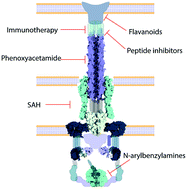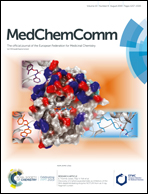On the road to structure-based development of anti-virulence therapeutics targeting the type III secretion system injectisome
Abstract
The type III secretion system injectisome is a syringe-like multimembrane spanning nanomachine that is essential to the pathogenicity but not viability of many clinically relevant Gram-negative bacteria, such as enteropathogenic Escherichia coli, Salmonella enterica and Pseudomonas aeruginosa. Due to the rise in antibiotic resistance, new strategies must be developed to treat the growing spectre of drug resistant infections. Targeting the injectisome via an ‘anti-virulence strategy’ is a promising avenue to pursue as an alternative to the more commonly used bactericidal therapeutics, which have a high propensity for resulting resistance development and often more broad killing profile, including unwanted side effects in eliminating favourable members of the microbiome. Building on more than a decade of crystallographic work of truncated or isolated forms of the more than two dozen components of the secretion apparatus, recent advances in the field of single-particle cryo-electron microscopy have allowed for the elucidation of atomic resolution structures for many of the type III secretion system components in their assembled, oligomerized state including the needle complex, export apparatus and ATPase. Cryo-electron tomography studies have also advanced our understanding of the direct pathogen–host interaction between the type III secretion system translocon and host cell membrane. These new structural works that further our understanding of the myriad of protein–protein interactions that promote injectisome function will be highlighted in this review, with a focus on those that yield promise for future anti-virulence drug discovery and design. Recently developed inhibitors, including both synthetic, natural product and peptide inhibitors, as well as promising new developments of immunotherapeutics will be discussed. As our understanding of this intricate molecular machinery advances, the development of anti-virulence inhibitors can be enhanced through structure-guided drug design.

- This article is part of the themed collection: Antimicrobial Resistance


 Please wait while we load your content...
Please wait while we load your content...